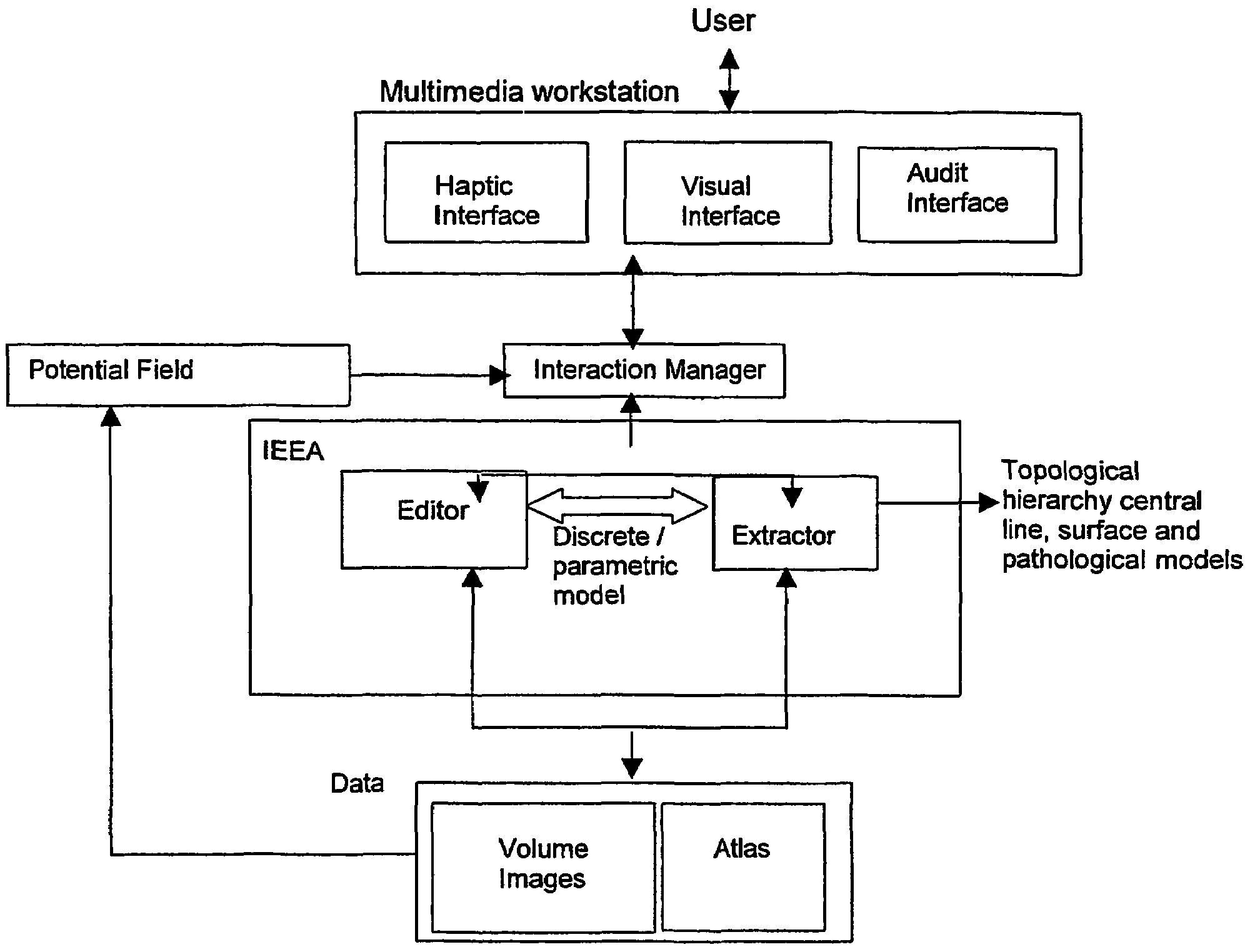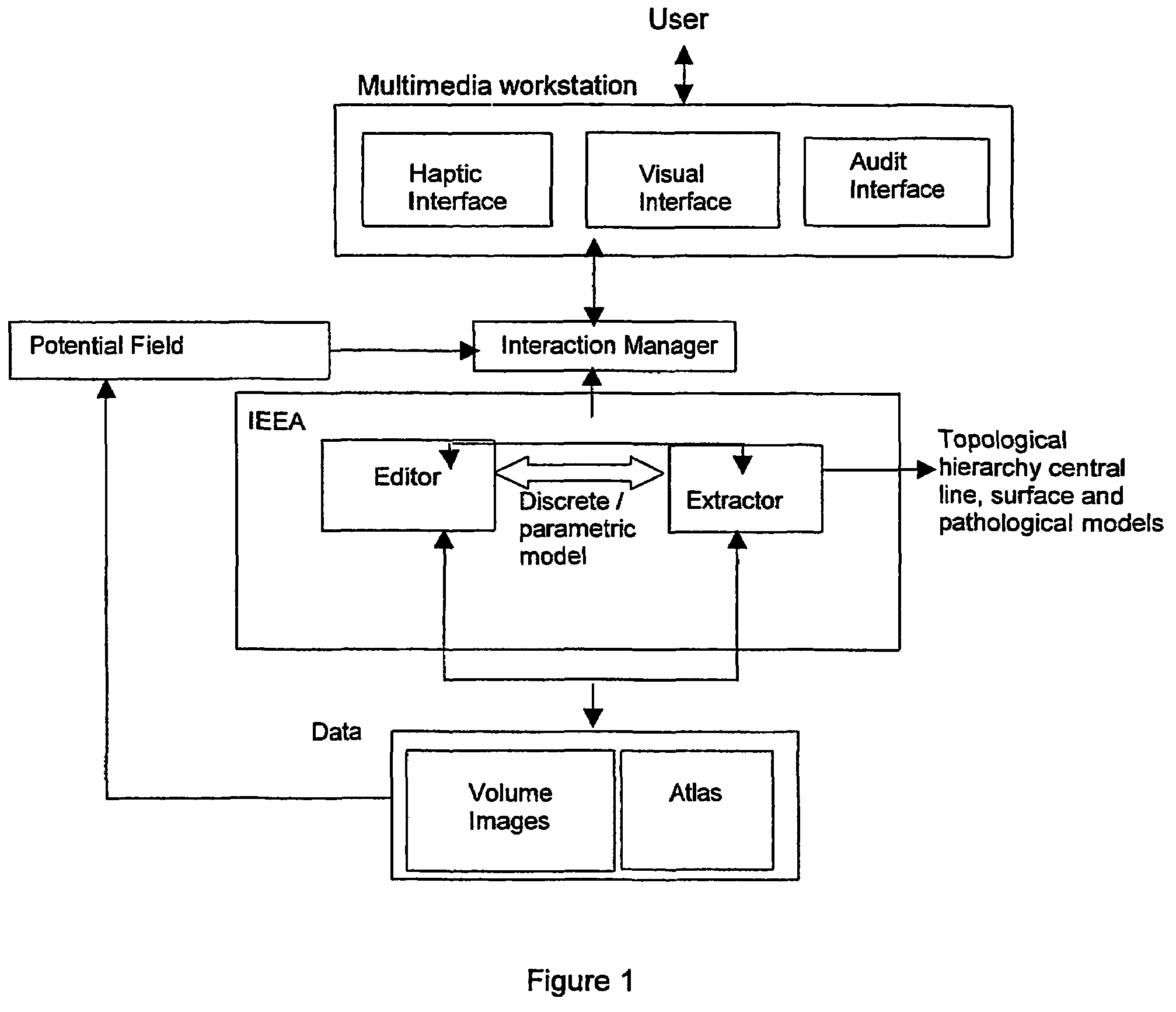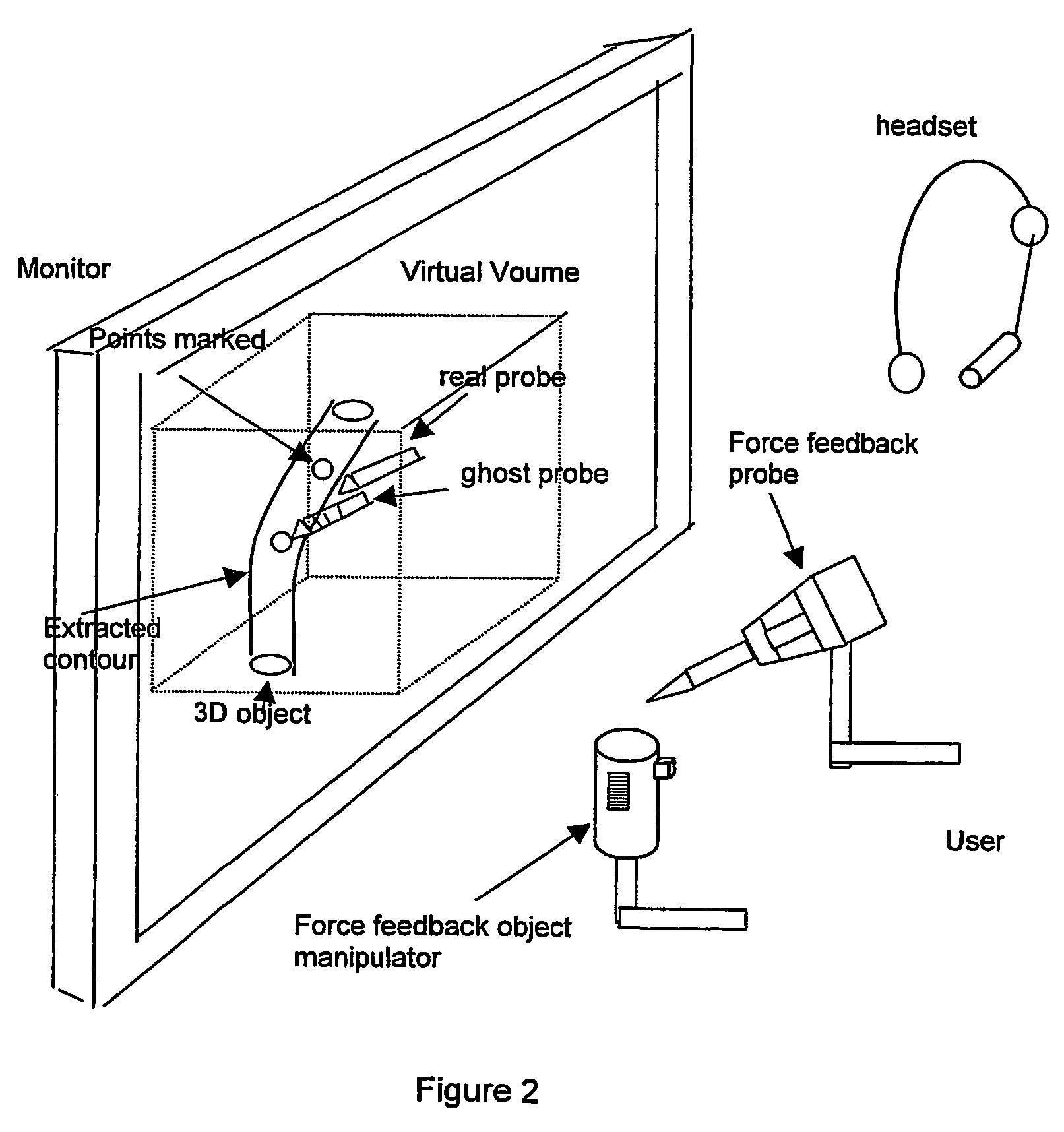Virtual surgery system with force feedback
a virtual surgery and feedback technology, applied in the field of virtual surgery systems with force feedback, can solve the problems of cumbersome traditional human computer interaction (hci) methodology, too many buttons to be depressed on the keyboard mouse or other interfacing device,
- Summary
- Abstract
- Description
- Claims
- Application Information
AI Technical Summary
Benefits of technology
Problems solved by technology
Method used
Image
Examples
example operational
Procedure
[0247]In this section, the use of an Incremental Extraction and Edit System is described with reference to the extraction and editing of a three-dimensional object from volume data.
[0248]A three-dimensional volume is loaded and displayed along side with audio and haptic controls. The first step involves a preliminary extraction of a three-dimensional object from the volume data. The user then refines the extracted model with tools provided in the Editor module. The user could output or save the model when he or she is satisfied with the results. There are three modes in the extraction method. We will discuss how Extractor and Editor work to pursue their goal, aiding user to extract and edit object in volume data.
Extractor
[0249]The Extractor provides a user with three interaction modes such as Tracking Mode, Picking Key Points Mode and Guided Mode. Under each mode, the user is expected to give the Extractor a shape hint in a certain form of his desired object by use of one, ...
PUM
 Login to View More
Login to View More Abstract
Description
Claims
Application Information
 Login to View More
Login to View More - R&D
- Intellectual Property
- Life Sciences
- Materials
- Tech Scout
- Unparalleled Data Quality
- Higher Quality Content
- 60% Fewer Hallucinations
Browse by: Latest US Patents, China's latest patents, Technical Efficacy Thesaurus, Application Domain, Technology Topic, Popular Technical Reports.
© 2025 PatSnap. All rights reserved.Legal|Privacy policy|Modern Slavery Act Transparency Statement|Sitemap|About US| Contact US: help@patsnap.com



